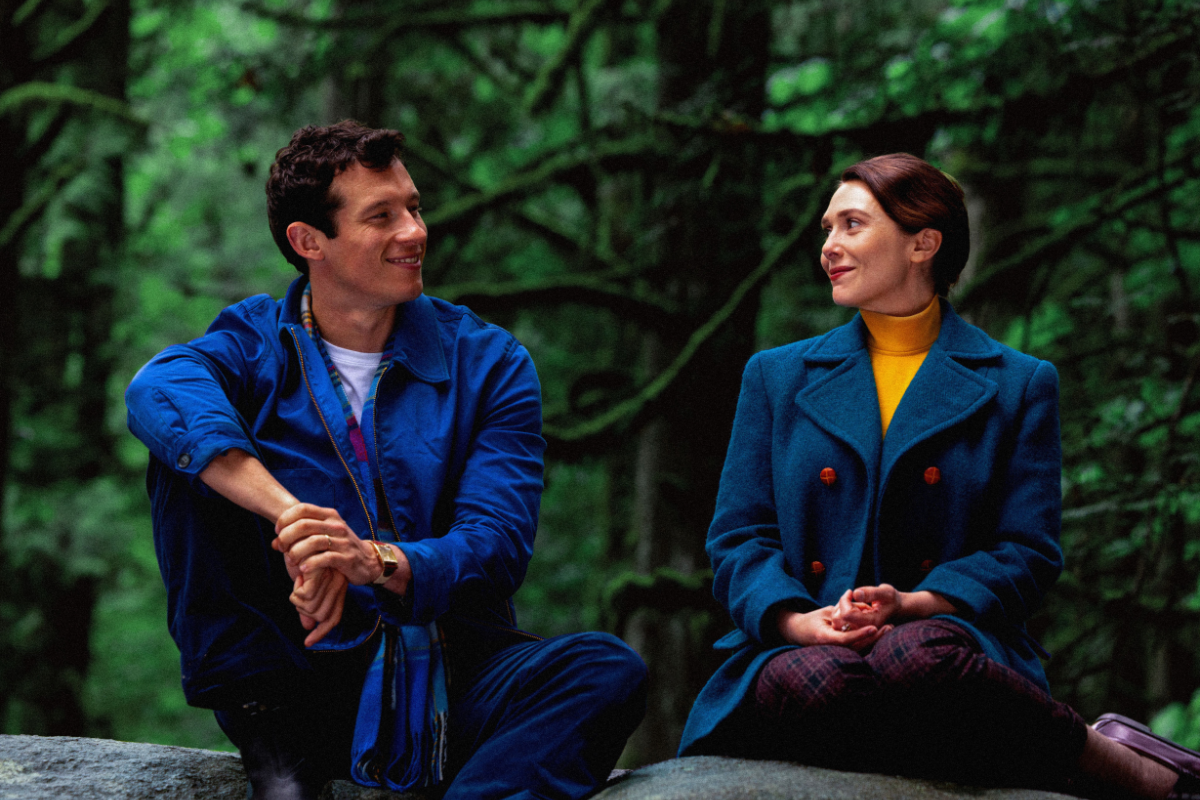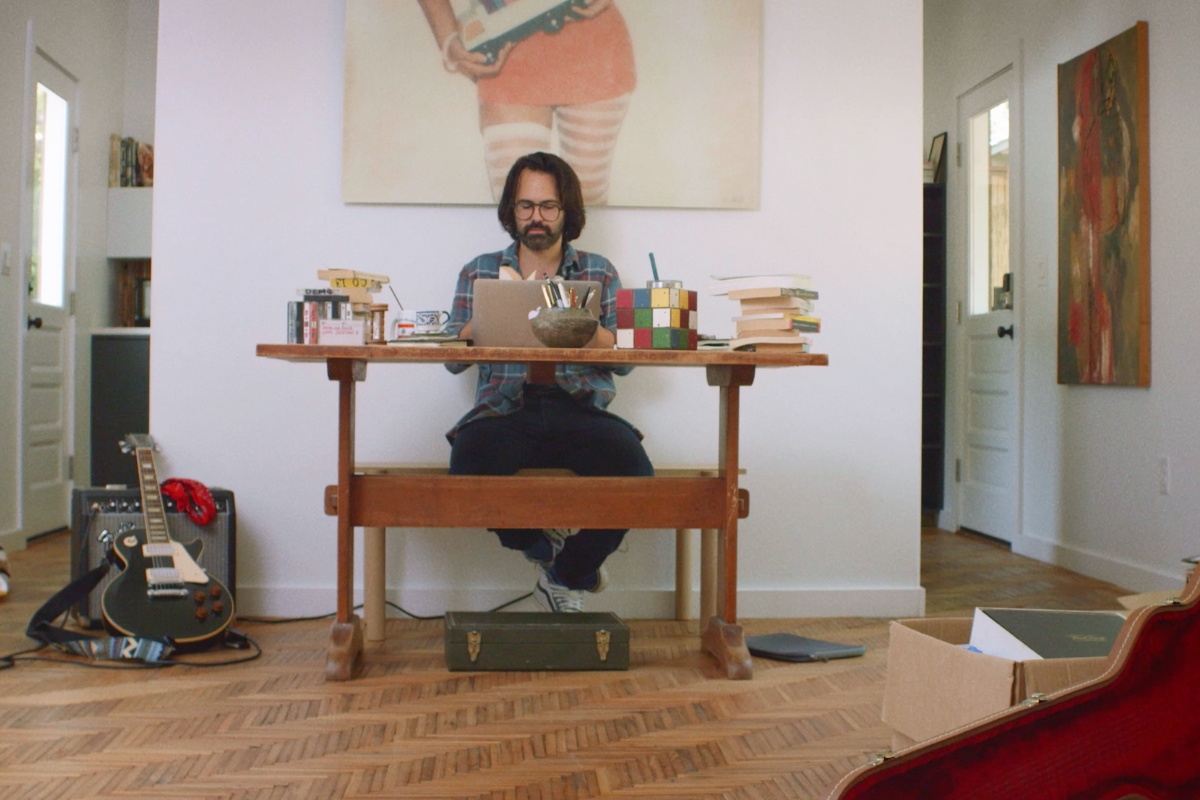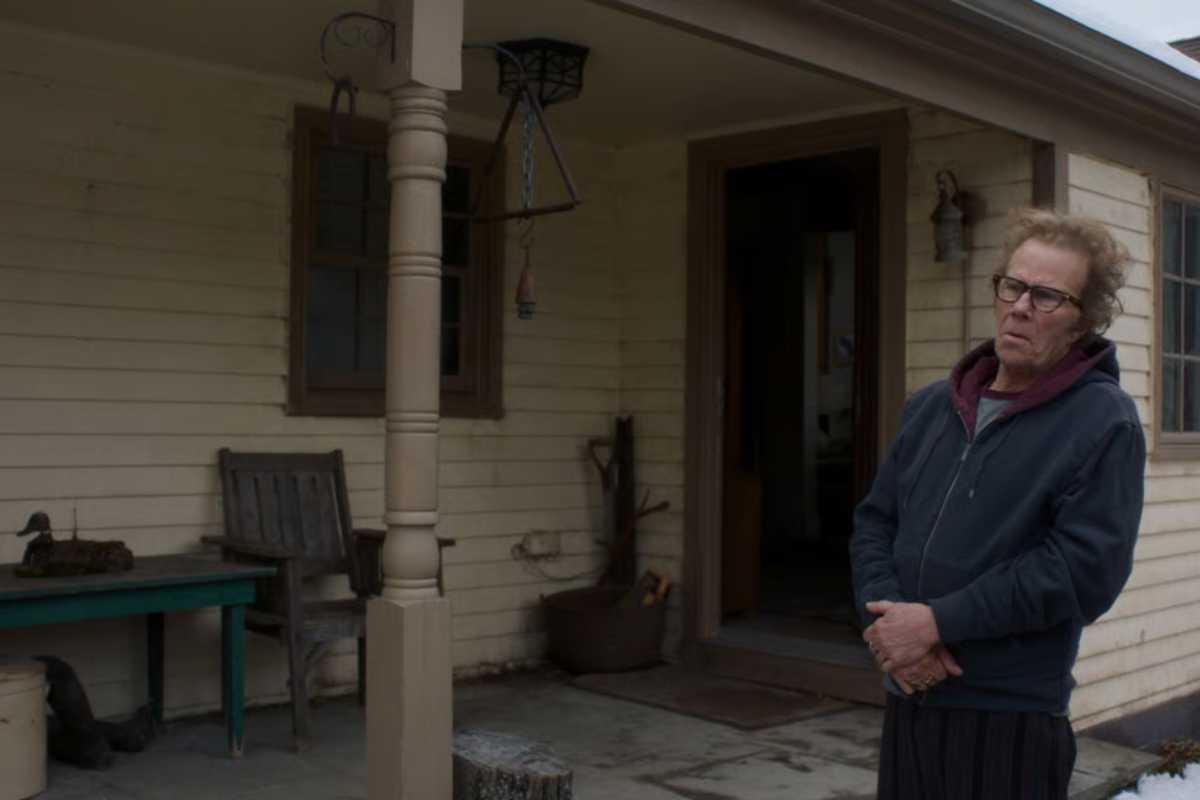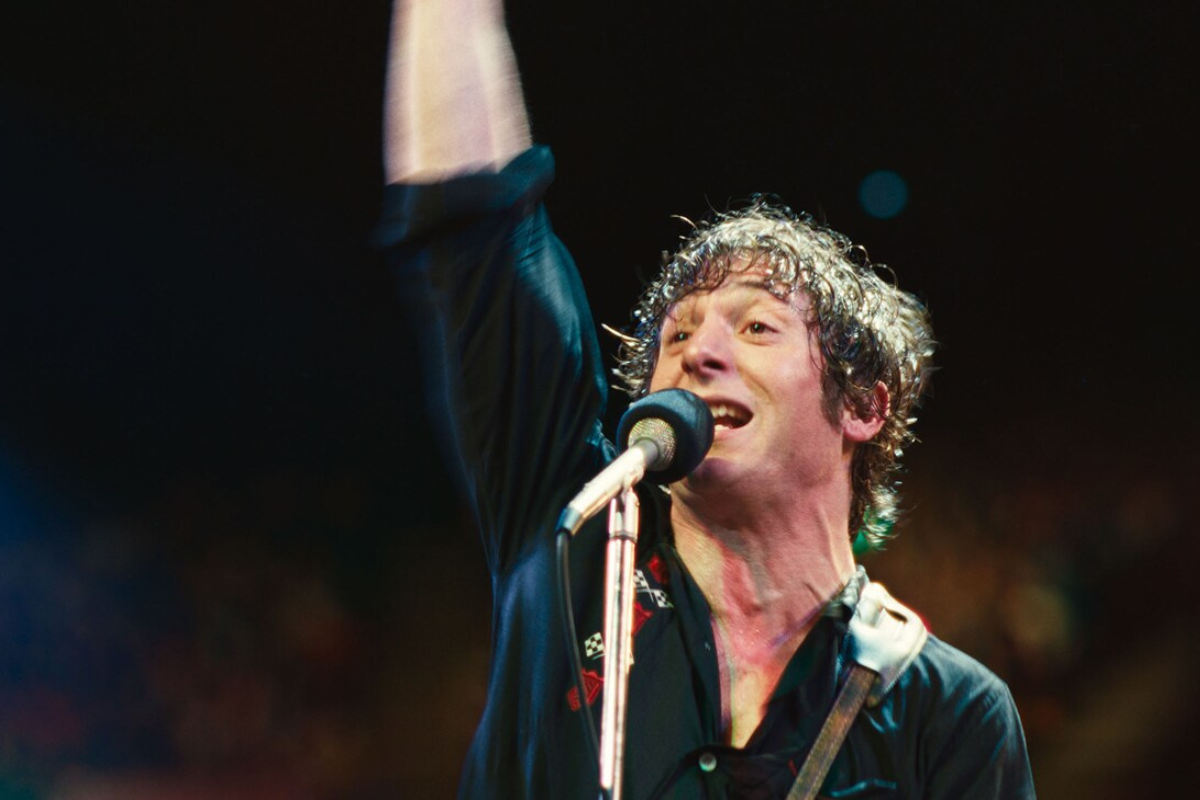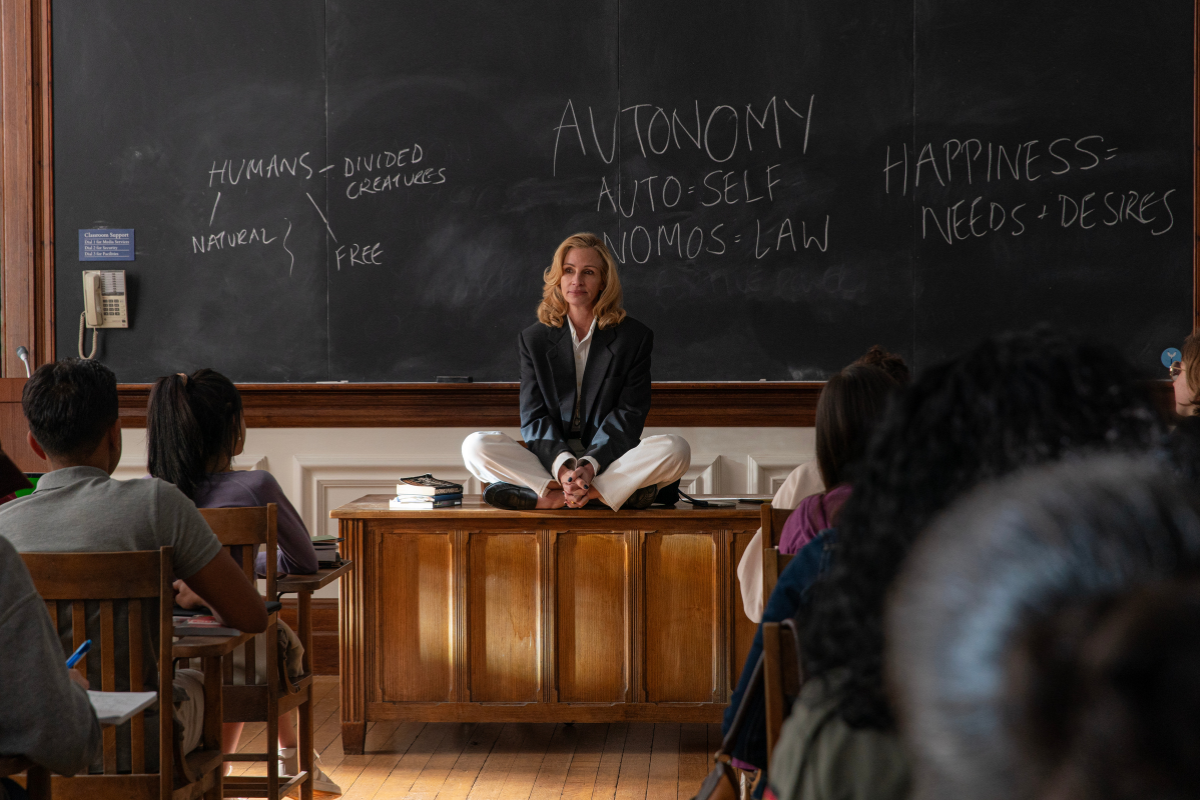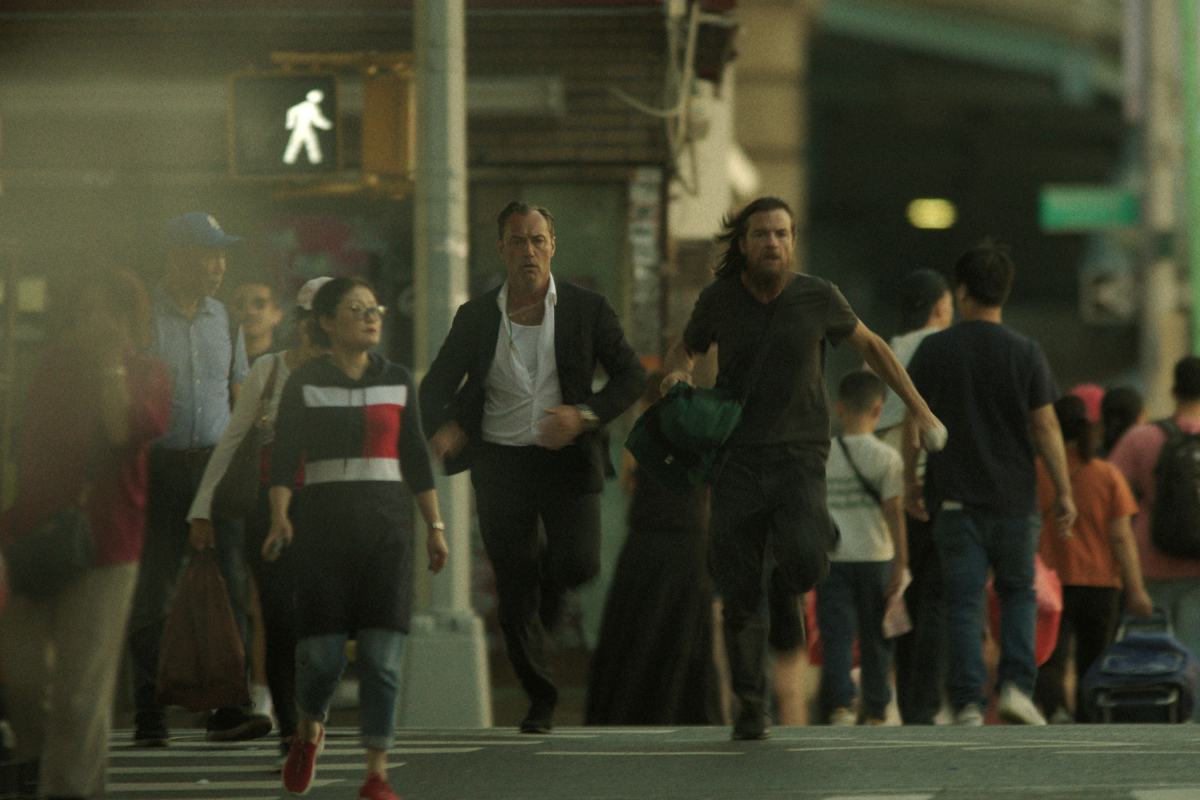Tapping Into the Forward Momentum of Rom-Com ‘The List’ with Director Melissa Miller Costanzo
Melissa Miller Constanzo recently spoke with Script about her initial reaction to Lederer and Vitolo’s screenplay, how her Art Department background influences her directing, why ‘The Cannonball Run’ film was rhythmically influential, and so much more.
Abby is about to get married and everything is perfect. Until she finds out her fiancé slept with a celebrity from his "free pass" list. To get her mind off things, Abby and her best friend Chloe come up with a crazy idea—Abby should pursue a celebrity from her own list, which includes tough guy action movie star Mac West, Sexiest Man Alive Cooper Grant, and multi-Platinum Grammy-award-winning rapper Avon. In LA, their friend Sam, a Hollywood talent agent and Chloe's ex, calls in all her favors to help Abby get into the same room as her celebrity crushes. But getting their attention will be up to Abby. Just as she starts to get close to living the ultimate dream in La La Land, things become complicated when Abby meets Jake, a local waiter with big dreams of his own, who gives her a fresh perspective.
The List is chock-full with knee-slapping moments and dialogue, and above all is a breath of fresh air in the romantic comedy landscape. It doesn't heavily rely on rom-com tropes and puts the female lead's wants, ambitions, and failings front and center - whereas it could have easily fallen into the rom-com trope of the handsome male lead saving the day and relieving her of all her woes. The film is written by Rob Lederer and Steve Vitolo, and helmed by Melissa Miller Constanzo.
This isn't Melissa's first rodeo in the feature space, however, it's her first time stepping into the rom-com genre as a director. Luckily, for the audience and her team, she kicked it out of the park.
Melissa Miller Constanzo recently spoke with Script about her initial reaction to Lederer and Vitolo's screenplay, how her Art Department background influences her directing, why The Cannonball Run film was rhythmically influential, and so much more.
This interview has been edited for content and clarity.
Sadie Dean: What initially attracted you to the material as a director and storyteller yourself?
Melissa Miller Costanzo: So, it's interesting, because my first movie is more of a dramedy. And I kind of swim in those waters a little more. I think I was a little shocked slash maybe frightened when I got this rom-com. The hook was just so funny to me and universal. After reading it, I had some very strong feelings of kind of what I would want to change. But the core of what was on the page was really funny. There were definitely laugh-out-loud moments to me even in the script phase. So that's always a good sign when there's an audible reaction…I just found myself laughing out loud.
When you're a director, you're always open to the idea of a job. But then you also are like, ‘Can I spend two years of my life doing this?’ And so, I just ultimately got on the phone with the producer and the writers and we just felt like we were all coming from the same place humor-wise, and we had a similar sense of humor, and even on the call, we were kind of riffing - I think we all felt comfortable with each other. And they felt comfortable with me as their director and felt that I would do a service to their project. And then we kind of just went on and we developed the script for I would say, a few months, and then we started going out to actors.
Sadie: In terms of the character development, was there anything that was bumping you that you needed to go back and refine to really get more tension or comedy out of?
Melissa: For me, there wasn't so much like, in the story arc that it needed work. It was more about Abby is “stumbling out of the bar.” She was just stumbling a lot. [laughs] And there were two male writers and I think Halston [Sage] often even more so than me, would be like, ‘Why is she drunk and stumbling a lot. Who is this person?’ And they had actively made her a working professional. Yet she's stumbling.
I think there's a very specific scene when they're at the caves and the way it was originally written, she gets stuck, and there's sort of that tropey moment where he pulls her out and she falls on him. And even though there's a place for that, and a rom-com is definitely a place for that, we just felt like, ‘Why does it have to be this male savior?’ I wouldn't say that I'm like overly political or whatever, but I think some things just jump out at you.
And so those are the things that we wanted to just make sure Abby wasn't like always stumbling out of a bar. And so, we kind of pulled back on that and also, I think, Chrissie Fit who plays her best friend, she was like, ‘I don't seem like I leave the house very much’ and you don't want to just have that feeling of like, ‘you're the best friend.’ And so, we wanted to make sure that we gave her a bit of a backstory, and that everyone sort of had their own backstory, and they weren't just there to service the lead, whether it was a female or a male.
Sadie: What I really enjoyed about this film, too, is that this world feels very organic and lived in. How much has your art department background influenced your directing style?
Melissa: I think it's just what I notice in a frame. For me, what's in the frame is obviously so important. But I think again, people don't give the art department enough credit for various reasons, I think the biggest reason is because you simply don't know what they've done. You can look at a costume and be like, ‘Oh, someone picked that out.’ There's things that you can understand that someone made a choice, but with production design, if it's done well, you're either supposed to really notice it, or in most cases, not notice it. So, I think that they get a bad rap, because people don't realize how much work is done.
And we didn't have any builds in this one. But in a lot of movies, there's builds and so that's really hard to make a build look like it's a real location and look lived in and not just look like two walls seamed together. There's so much work that goes into the color of the wall. We didn't have the luxury of being able to use wallpaper colors as much as we wanted to.
INDIE SPOTLIGHT: Interview with 'Bad Things' Horror Writer-Director Stewart Thorndike
But that's another tool that I think people need design just as much a tool, as cinematography, as anything else. It's always something that's really important to me, and I think a big pet peeve of mine, just get a steamer, they're not expensive, you don't want to see seams in the drapes, or like the pillowcases, a lot of times they're like, ‘Alright, we're ready to shoot.’ And they take a pillowcase literally out of the packaging, put it on a pillow and they start rolling. And now you're gonna look and you're gonna see that, but so those are the type of things that bother me so much.
What I learned the most about my background is, in most cases, everything's getting aged, everything is going to the scenic department and they're aging it because life is aged. So, I think that's the coolest thing I think about behind the scenes is how much they're working towards making it seem like they've had this chair forever type of thing. And that's a luxury.
Sadie: Your collaboration with your DP Broderick [Engelhard], he's got a really great eye for camera placement and how it moves. When you two were prepping, how much time was spent on settling on a specific visual tone down to your camera movements, and how those shots either heighten comedic moments or even tension?
Melissa: The first thing that we're doing is talking about movies and what we want it to look like. I think the movie A Promising Young Woman came up a lot. That's obviously extremely heightened, but we really did love the color schemes. And Palm Springs came up. So, we were just talking about the look of the movie first and we were able to then take a lot of those stills and give them to our colorist even before we started shooting. And then also, he created a lot in the camera, so when we're looking at the monitor, we were seeing what we would see colored the right way. And then he would also take stills while we were shooting and send them to our colorist as well, he would color them and then send them. So, we had a working relationship with our colorist very early on.
And then we did lens tests and everything. And then we were very lucky, I don't know if you know Bokeh Rentals in LA, and they were like a small outfit at the time, [laughs] and so they were trying to gain their business and it was also during COVID, and so they gave us a Mini Alexa body, which is incredible.
Brody just recently sent me some stills from the shoot, and I forgot how beautiful it looks. And I think it's like, yes, it's a rom-com, but it doesn't have to look like one. And I think that's how we approached it even with our aspect ratio, and just everything we did, we approached it as we just want this to look as beautiful as it can. And also, be funny. So that was kind of our approach.
And then of course we shot listed a lot. And then the producers would be like, ‘You have to be joking.’ And we'd be like, ‘We're not,’ and then they'd be like, ‘You need to cut,’ and so we would have to dwindle down our shot list. And I will say he was incredible at merging shots. So, if we had a master, but then we had a two shot and then a single, he'd be like, ‘Alright, well this single can become the two shot,’ and so he's so good on his feet like that, where I'm like panicking in a corner that we're not gonna make our day. So, I was so lucky to just have that sort of energy on set.
Sadie: And it's so important in that kind of coverage too. And in comedy.
Melissa: Reaction shots are like everything. I felt like I spent so much time doing reaction shots. [laughs]
Sadie: Did you have multiple cameras?
Melissa: We couldn't carry two cameras just like we couldn't carry a Steadicam. So, we would have to schedule it. We knew the times when we were going to use that. But yeah, there were times, like in the bar scene where we had two cameras. We utilized them on the days we knew that we needed to get the most coverage type of thing.
Sadie: What inspired you to become a filmmaker?
Melissa: I always loved movies. I always loved writing. And I think I used to write short stories when I was a kid. Luckily, they don't exist anymore. [laughs] I can't find them. But it was just something that I was always interested in. I was also a dancer growing up. And so, I had that sort of performance theatrical thing inside of me. And then when I decided not to pursue the dance career, my first job out of college was at 3 Arts Entertainment, which I still have good relationships with them over there. And I didn't realize how lucky I was at the time, like Dave Chappelle was giving me joints and UCB was at their height. And I was around all these amazing people. And I was too busy having like a chip on my own shoulder to realize it.
Why Celine Song’s ‘Past Lives’ is a Movie About Locations
And then I was able to intern for Ellen Lewis Casting, and then I was a production PA for a while, which again, it's like the best and worst thing that can ever happen to you. There'd be nights, 3 am, pouring rain, I'm on the lift gate, hysterical crying, and wishing I was anywhere but there, but I learned so much. And then I sort of pivoted to the Art Department, which was more steady work for me. I joined the union; I got health care. But then I was still kind of writing on the side. And my first movie was just kind of a fluke. And then I ended up getting it made, which was really exciting, obviously. And then I think that lead to this next one.
Sadie: And having this experience doing all these things, I think feeds into being a director.
Melissa: I do think some directors fall from a puffy cloud, and they've never been on set for whatever reason. But I just know how every department works. I know how much my choices affect every department. So, I'm very cognizant of that. I'm not gonna say that I'm going to like bend my creativity to something but I'm much more flexible, knowing like, ‘Oh, if we just combine these two scenes, or these two locations, it's going to be a hell of a lot easier for the art department.’ In the end, just more considerate of the below-the-line crew, because I still go back and forth. And so, I'm just more respectful and understand what everyone is bringing to the table I think a lot more.
Sadie: Are there specific themes or stories you’re drawn to exploring through your work?
Melissa: Yeah, it's funny. I wish there was like an immediate connection between this movie and my last one. I can't say that there is. If anything, it's I look for strong characters. For me, plot isn't as important as character study and seeing a character go somewhere. Even though this was a rom-com…I liked the idea of doing a buddy movie. And when I first read it, I thought of the movie Cannonball Run, which wouldn't necessarily be your first thought. But there was some sort of forward motion that I loved about that movie that I felt that I could bring to this movie. And that was something that was really important to me to have a forward rhythm. And that was in the edit. And that was the way the actors worked. I wanted to have this momentum. And so, I think there's some comedies in some movies that like, speaks to everybody, whether you love comedy or not. And so there was something about this movie.
My next movie is about depression. So I think, really to sum it up, it’s the human experience. And as long as I can connect to it on a personal level. I think the sense of humor was what I really liked about this movie that I just made. And again, the human condition, the relationship between families like those are things that I like, I love Tamara Jenkins. I love Kenneth Lonergan. Those are typically the filmmakers that I lean towards. But then again, I just had a blast making The List and that's OK.
Sadie: Expanding your horizons, that's totally fine. Speaking of the editing, knowing that the editor is also your husband, what was that collaboration like?
Melissa: Russell [Costanzo], he made sure that he had all our shot lists and had our storyboards and so he knew what the intention was, from the beginning. I think he's a master of band-aids. He's amazing at fixing a problem. So, me knowing that, and again, now this is my second movie, it's really important to get a lot of B roll, it's important to get cutaways. It's important to, again, service the editor. Make sure even if you're in love with the take that your actors doing, have them try it a different way, just give variety, because if you don't have variety, you're not going to be able to find the movie in the edit, and you're gonna be backing yourself into a corner.
So, Russell also pushes me a lot. And I might be set on a scene being a certain way. And then he'll come up with an idea and maybe push me a little more than I'm comfortable with. But that's the comfort level because we're married. And then ultimately, between the two of us, we find something that works. And so, I just like that he's a creative editor. He brings something to the table all the time.
Sadie: Ultimately, the edit is the final rewrite of your film so you have to get as much as you can.
Melissa: Yeah, exactly. And that's another thing too, being on set knowing ‘Alright, start big.’ And then like you said, you can bring it down. You can't make it bigger; you can only make it smaller. So that's for rom-coms especially - that's the most important thing.
Sadie: Yeah, absolutely. Any advice for first-time filmmakers?
Melissa: The reason I got to shoot my first movie is because my agent said, ‘Do you want to direct?’ And I said, ‘Yes.’ And then I left the room, ‘What the hell did I just do?’ And then once I was there, I realized, and again, maybe because I had that experience in the industry, but I realized I knew more than what I thought. So, it really is just trust yourself and trust your gut, because I don't think your gut is going to steer you wrong. The biggest advice is don't doubt yourself and also don't close yourself off to your collaborators. There's been too many times where I've seen a director who just is so positive that their shot is the way to do it. That they don't even listen to anybody else. It is the most collaborative art that there is.
When I first worked with a DP, I was nervous. I didn't know lenses as well and he was like, ‘Let me direct the photography. Costume designers are a costume designer. You tell me what the important emotion of the scene is. And we'll work together to make sure that the shot projects that,’ and I was like, ‘Oh, I don't have to do everything!’ And I think a good director reacts. There are a million people asking you questions. All you have to do is you just have to react and say, ‘No, I don't like that.’ ‘No, for whatever reason, this isn't responding to me.’ And you don't have to know why you just have to sense yourself and trust yourself. And sometimes I'd be like, ‘No, I want it like this because –' I didn't know how to describe it.
So, just trust yourself and know that everyone's there, unless you're an asshole, but if you're not an asshole, everyone there is really there to help you make the movie that you want. And they're all, in most cases, in fields that are really special to them. And so just let them in.
The List is now available on Digital and On Demand.
Learn more about the craft and business of screenwriting and television writing from our Script University courses!
Sadie Dean is the Editor of Script Magazine and writes the screenwriting column, Take Two, for Writer’s Digest print magazine. She is also the co-host of the Reckless Creatives podcast. Sadie is a writer and filmmaker based in Los Angeles, and received her Master of Fine Arts in Screenwriting from The American Film Institute. She has been serving the screenwriting community for nearly a decade by providing resources, contests, consulting, events, and education for writers across the globe. Sadie is an accomplished writer herself, in which she has been optioned, written on spec, and has had her work produced. Additionally, she was a 2nd rounder in the Sundance Screenwriting Lab and has been nominated for The Humanitas Prize for a TV spec with her writing partner. Sadie has also served as a Script Supervisor on projects for WB, TBS and AwesomenessTV, as well as many independent productions. She has also produced music videos, short films and a feature documentary. Sadie is also a proud member of Women in Film.
Follow Sadie and her musings on Twitter @SadieKDean


